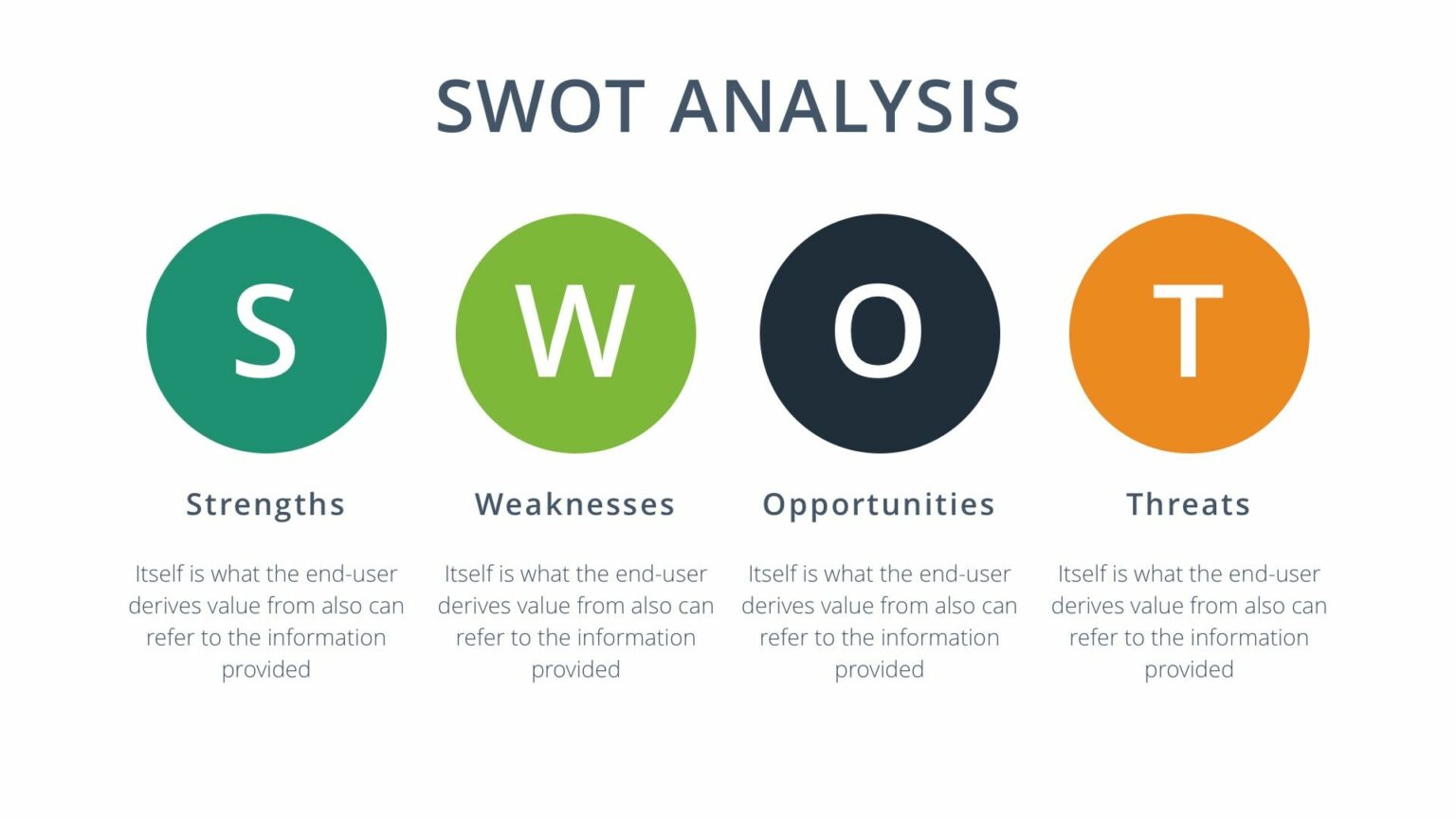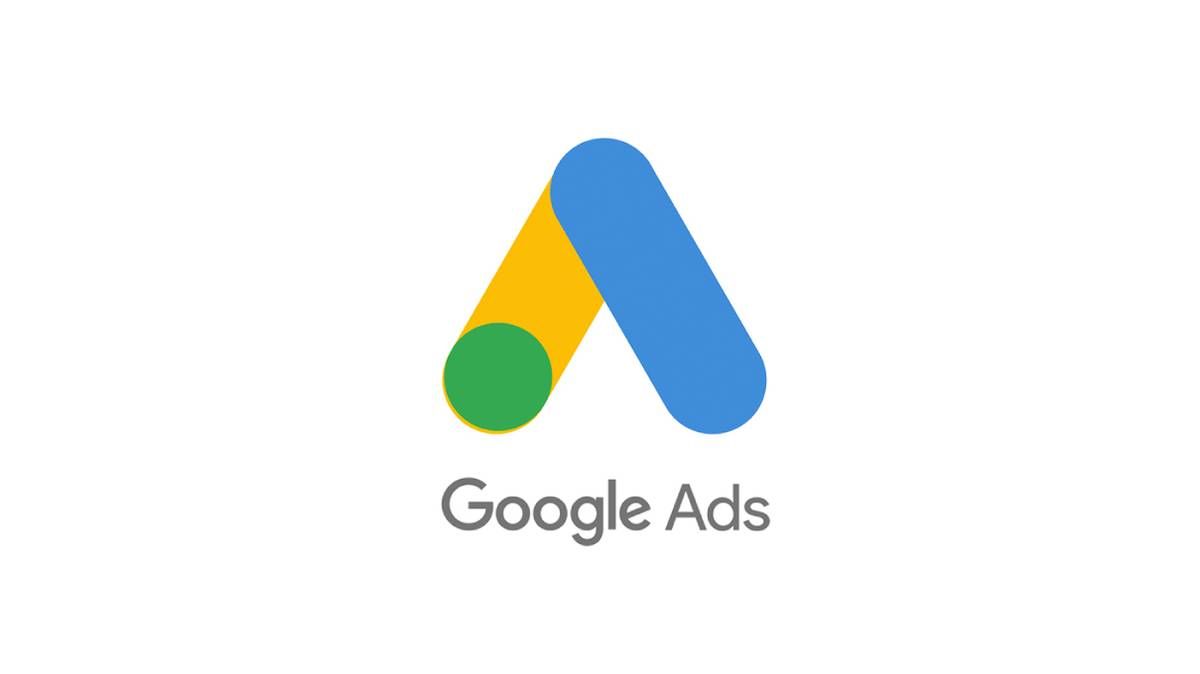Small business copywriting can’t create demand for your products.
Yes, you read that correctly…
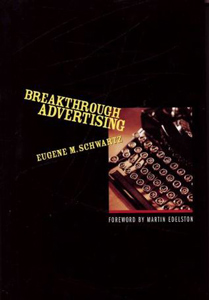
Whether it be for your product pages, emails, or advertising; the role of copy is to point an already existing desire to your products…
…not to create the demand.
As Gene Schwartz, one of advertising’s early pioneers, once said in his book Breakthrough Advertising…
“Copy cannot create desire for a product. It can only take the hopes, dreams, fears, and desires that already exist in the hearts of millions of people, and focus those already-existing desires into a particular product.” – Eugene Schwartz, Breakthrough Advertising
This book has been a powerful tool in the way I approach writing copy for small business products or services and you’ll see those principles within this guide.
So how do we channel an existing desire?
First, we must identify and choose a problem worth solving…
…but your customers aren’t always ready to buy now.
…so we must also identify their level of awareness before a purchase.
Is this making you rethink the copy that’s currently on your website, emails, and ads?
Good.
Here’s what you’ll learn:
- We buy solutions, not products
- The 5 levels of awareness
- The 5 stages of market sophistication
- Message to market match
We buy solutions, not products
Learn this product copywriting principle…
We do not buy products, we buy solutions to our goals, challenges, or pain points.
Just think when you shop for a winter coat, you’re buying a solution to the cold weather (pain point). When you order that double espresso coffee in the morning, you’re buying a solution to staying awake and alert in the morning (challenge). When you purchase that new, state-of-the-art golf club, it’s because you want to improve your game (goal).
But what about people who purchase those expensive Ray Ban sunglasses? How do you explain that? What solution is that providing that a way cheaper option can’t!
Yes, there are cheaper options. But they’re buying into their identity. A version of their ideal selves (goal) a cheap brand doesn’t provide.
The question your business must answer is: “What problem do I solve?”
So we must first identify the problem…
The problem that will make purchasing your products a logical decision. You’ll find these problems from the insights gathered in your small business buyer persona.
Do your customers know they have a problem?
Not everyone is ready to buy or even knows that they have a challenge or goal that you can satisfy.
Therefore, your target customers fall into 1 of 5 levels of awareness.
This means we’ll need to create unique product messaging that aligns with each level…
Small Business Copywriting: The 5 levels of awareness
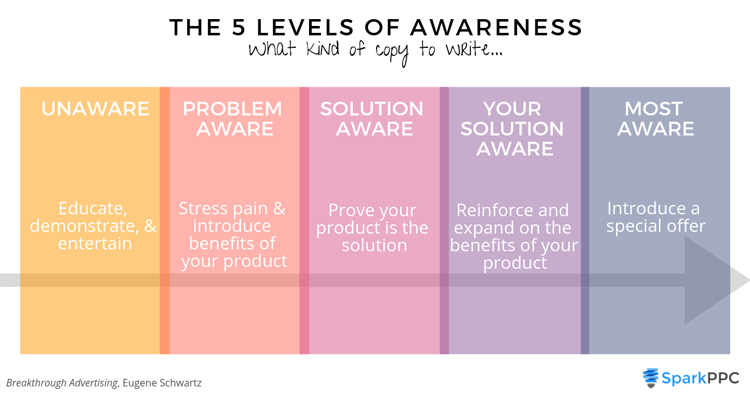
The 5 levels of awareness are the stages of which your target customers fall into during the buyer’s journey.
1. Unaware
Your target customer hasn’t identified a goal, challenge, or pain point even though they may be experiencing it.
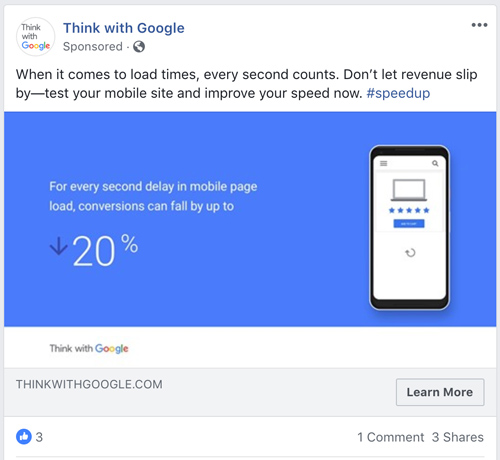
At this level, you’re not looking to sell, you’re looking to educate and create problem awareness.
Example: This ad is creating Problem Awareness for the Unaware group. It leads with value by offering a speed test as opposed to selling something directly.
2. Problem Aware
Your target customer knows they have a goal or challenge, but not that a solution exists .

At this level, amplifying that problem is key. Really stress how bad it is and then introduce the solution.
Example: The brand in this ad is agitating the problem by mentioning symptoms using a testimonial to make their target customers Solution Aware.
3. Solution Aware
Your target customer knows they have a problem and that solutions exist ; but not that your product provides that solution.
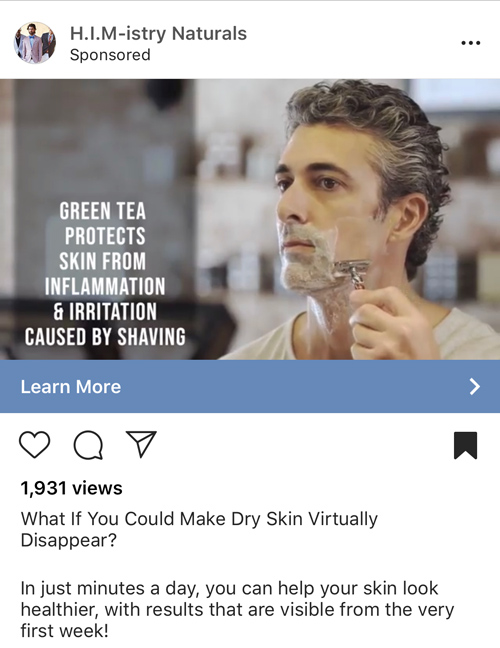
A bridge between your product and their problem needs to be created with your copy.
Example: The vendor in this ad is hitting a deep pain point here with their audience by asking it outright as a question. Then they present the solution to make their target customer Solution Aware.
4. Your Solution Aware
Your target customer knows they have a problem and that solutions including yours exist, but doesn’t yet want it.
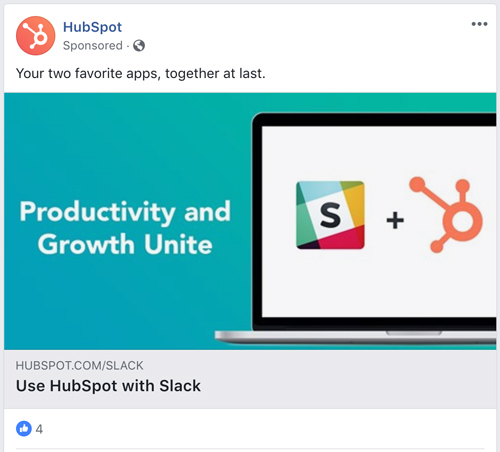
Stress the desired goal or the challenge to overcome and prove that your product is the solution that will accomplish that. Show that the benefits exist within your product to do so.
Example: This brand knows that their target customers already use these two solutions, therefore they’re outright communicating a Your Solution Aware message to their audience.
5. Most Aware
Your target customer wants your product but is waiting for the right offer .
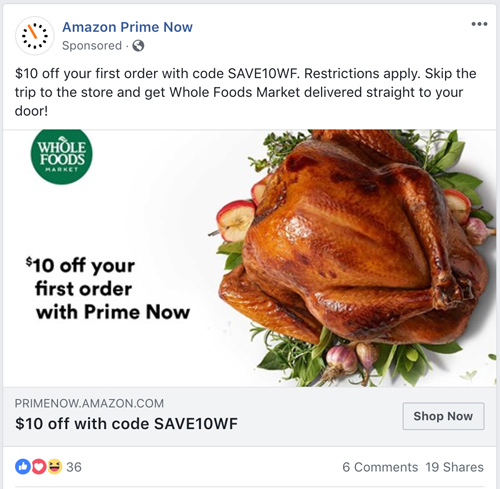
Your prospect is waiting for the right offer, an incentive for them to pull the trigger so present it to them.
Example: In this ad, the target customers are already aware of the product, but they haven’t yet purchased. The vendor then presents an offer to push them to make the leap.
Move them through each level
Your target customers will fall into one of these levels of awareness and you’re most likely to get the sale the closer they are to being Most Aware.
Therefore, your marketing efforts should focus on moving your target customers further down the levels of awareness.
Now, you’re probably thinking, “If I only focus on this one problem, I’ll be missing out on tons of customers.”
Wrong.
You can launch multiple marketing campaigns using multiple buyer personas centered around multiple problems.
Each campaign will speak directly to the problem of your buyer persona because if you’re pushing your product onto someone who has no idea they need your product, you’ll be wasting your time and money; because to them your product will be irrelevant.
But wait…
Whether or not you’re the first in your market will ALSO play a major role in how you create you do copywriting for small business.
Keep reading…
Small Business Copywriting: The 5 stages of marketsophistication
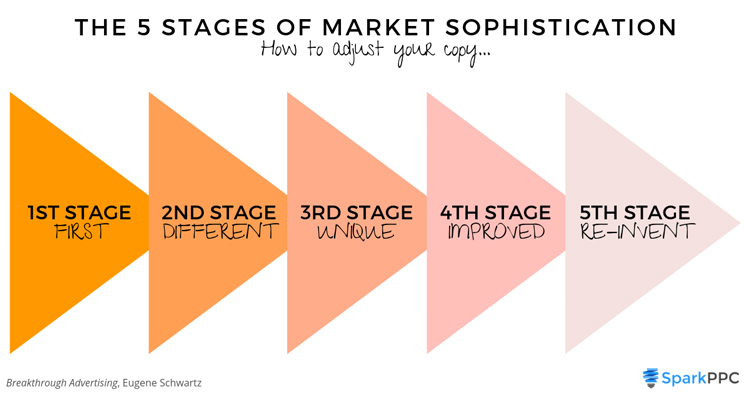
Are you the first in your space or one of many?
The more marketing and advertising there is in your market, the more sophisticated your target customers will be. They might’ve already heard some of the claims or messages you’ve thought of promoting. Your marketing message will need to evolve at each stage of sophistication.
It’s best to be first, if not first, then different…
Why first? First-mover advantage. That is, the ability to have a monopoly on your market.
With that said, this leads us to the first stage of market sophistication…
First Stage: Be First
You are first in the market; your product is new enough that the “newness” alone will get enough attention.
Be simple and direct in your messaging. Really hit on your products end result and introduce the product.
Example: Kleenex was first in their market for disposable handkerchiefs to fight colds and fevers.
Second Stage: Be Different
You are not the first in the market; therefore you’ll need to differentiate and own a new category within your product category.
Copy the end result messaging of your main competitor but expand on it, make the claim bolder, and outbid them to reach more of your audience.
Example: Amazon is a famous example of this, the very first online bookstore was Books.com; but Jeff Bezos seeing an opportunity advertised on over 28,000 sites making Amazon’s presence bigger, overtaking Books.com which later sold to Barnes & Noble.
Third Stage: Bring Something Unique
The niche is saturated; prospective customers have heard all promises from competitors; you’ll need introduce a unique mechanism or feature, something unique, that delivers the benefits.
Shift your messaging to from what it does, to how it does it. Don’t emphasize the accomplishment from owning the product but the performance of the product.
Example: Apple’s iPhone S line focuses on performance upgrades.
Fourth Stage: Improve The Uniqueness
Competitor messaging has matured and adapted to the Third Stage, now you’ll have to distinguish yourself yet again.
Focus on the benefits that deliver your target customers end result but distinguish it by making it easier, faster, more guaranteed, solve even more, surpass previous limitations, promise extra benefits, etc.
Example: We’ve watched this unfold for years, the war between Apple and Samsung smartphones.
Fifth Stage: Appeal To Identity
The market is essentially dead and previous marketing no longer works; let’s hope you’re never here, but there is hope.
Your focus here shifts to that of the Fifth Stage of problem awareness, which is your prospect is Unaware, so the focus is back on educating and identifying with the goals and challenges of the buyer as opposed to selling.
Appeal to identity.
Example: In 2010, Old Spice men’s deodorant relaunched with a new approach targeting a younger generation who were completely unaware of their need for Old Spice.
By analyzing your market, you avoid selling a tired, old message that won’t resonate with your target customers.
So what’s left?
Let’s put our learnings together and create message to market match.
Message to market match
Just like your product has to fit your market; your message has to match your market’s level of awareness and sophistication.
You use 3 tools to channel an existing desire to your products:
- Buyer persona (what problem do you solve?)
- Your products (what will your products guarantee?)
- The message that connects 1 and 2 together
Now that you’ve learned two of the most important principles in copywriting:
- The 5 Levels of Awareness
- The 5 Stages of Market Sophistication
Choose the problem that your products solve.
Acknowledge and reinforce with your copy.
Position your product as the ultimate and only viable solution.

